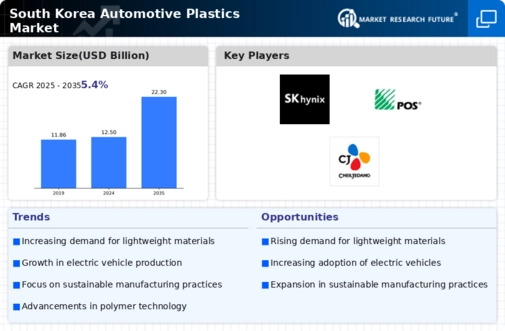The South Korea Automotive Plastics Market is now undergoing numerous significant developments that are defining its future. One of the primary drivers of this expansion is an increased emphasis on lightweight materials in car manufacture. South Korean automakers are moving toward utilizing more plastics to decrease car weight, improve fuel economy, and fulfill the government's severe pollution standards. Furthermore, revolutionary breakthroughs in polymer technology enable the manufacturing of high-performance plastics that can survive the harsh demands of automotive applications, making them a popular choice for parts such as bumpers, dashboards, and interior trimmings.
As the South Korea automobile market confronts pressure to transition to electric and hybrid cars, there are several chances to investigate sustainable plastic alternatives. The government is aggressively pushing green technology efforts, including encouraging firms to study biodegradable or recycled materials for automobile uses. This transition is consistent with the national aim of lowering carbon emissions and developing an eco-friendly vehicle environment, creating a huge potential for market participants to invest in and create sustainable plastic solutions.
Recent trends show that vehicle manufacturers and plastic suppliers are working more closely together to develop and adapt to changing safety regulations and consumer preferences.
With South Korea being a hub for automotive giants like Hyundai and Kia, there is a focus on creating a more integrated supply chain that incorporates advanced plastics into vehicle designs. The need for enhanced aesthetic appeal and improved durability of interior and exterior components is driving innovation in material development. Moreover, trends such as customized vehicles and smart technology are further pushing the demand for specialized automotive plastics. These developments highlight the dynamic nature of the South Korea Automotive Plastics Market and showcase the critical intersection of legislation, technology, and consumer behavior.
Source: Primary Research, Secondary Research,
Market Research Future Database and Analyst Review














Leave a Comment